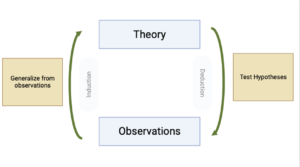The Three Pillars
Traditional economics relies (mostly) on revealed preferences and (sometimes) verbal reports to understand the desires of individuals and predict their actions. Neuroeconomics adds a third method, the direct observation of the underlying mechanisms leading to choices. Neuroeconomic Theory makes one extra step. It uses the evidence on brain activity to build models that can explain and predict observed behaviors. There are three major advantages in approaching economic decision-making from a Neuroeconomic Theory angle.

Disciplining bounded rationality arguments
Bounded rationality can be modeled in a countless number of ways. Neuro-economic Theory offers clear directives concerning constraints essential for decision-making processes.

Micro-founding preferences
By explicitly modeling the strategic interaction between distinct brain systems, it becomes feasible to establish micro-foundations for preferences and illustrate how alterations in processes yield variations in attitudes and preferences.

Providing testable implications
Models provide testable implications about the functionality of brain systems (e.g., information storage, processing during decision-making) and behaviors tied to analogous functions in decision-dependent scenarios.
Featured Videos
These videos explain our methodology and show how knowledge of the brain can help understand and model decision-making
